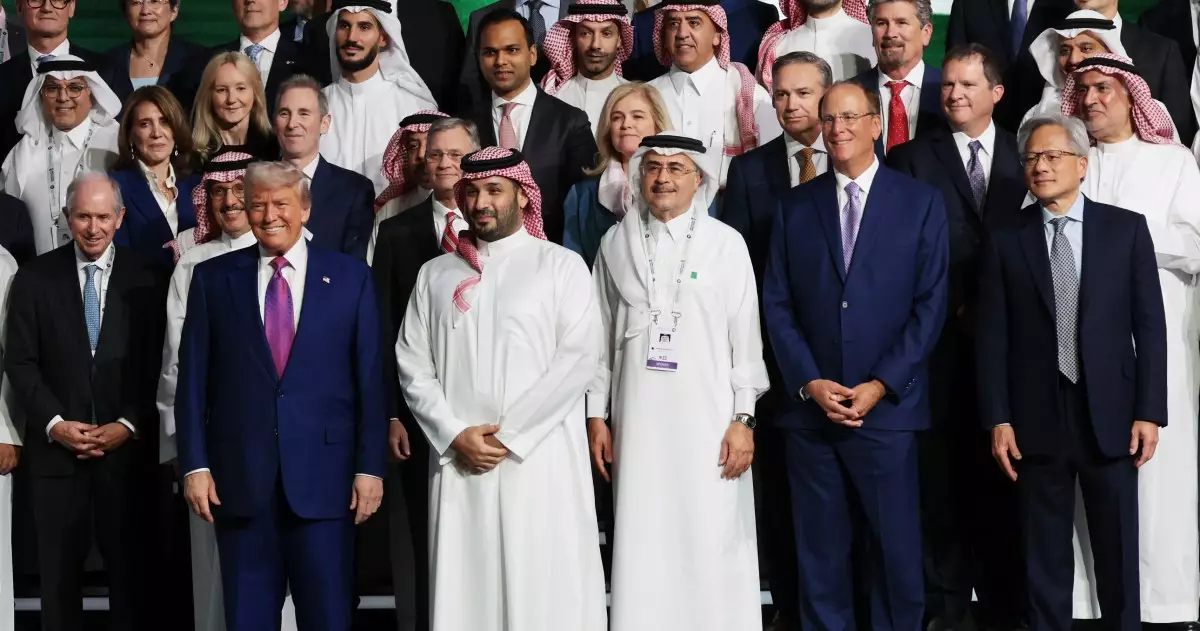In an era where artificial intelligence is rapidly transforming industries, the battle for supremacy in AI chips has become paramount. Nvidia, the titan of this sector, has faced numerous challenges in solidifying its dominance amidst geopolitical tensions and competitive pressures. Recent policy moves by the U.S. government, particularly under the guidance of the Biden administration, threatened to constrict Nvidia’s vast market share. However, with the rollback of export limits and a close alignments with political powerhouses, Nvidia is cleverly maneuvering to secure its primary position. The implications of these developments are profound, shaping not only the AI chip industry but also the broader landscape of international tech relations.
Political Alignments and Economic Interests
Nvidia’s close ties with the Trump administration have become increasingly evident, culminating in a significant pivot last week when export limits on U.S.-made AI chips were lifted. This repeal has been hailed as a victory for American innovation, enabling tech giants like Nvidia to increase their footprint in international markets without unwarranted regulatory hurdles. The Department of Commerce’s decision to rescind the Artificial Intelligence Diffusion Rule, which had posed severe restrictions on AI chip exports, illustrates a striking shift in economic policy. Officials cited concerns that such stringent measures would stifle innovation and diminish America’s competitive edge globally.
Moreover, Nvidia’s influence is further magnified by its ability to engage with presidential power directly. CEO Jensen Huang’s recent appearances alongside Trump in Saudi Arabia point to a strategic collaboration aimed at attracting foreign investments into U.S. technology. This cozy rapport between big business and government officials is not purely opportunistic but rather reflects a calculated strategy to fortify America’s position in an increasingly competitive tech landscape.
Huawei and Global Competitors: The Shifting Battle Lines
In stark contrast, Huawei continues to pose a formidable challenge, especially with its own Ascend AI chipset designed to compete directly with Nvidia’s offerings. The U.S. government’s warning to American companies regarding Huawei’s technology underscores the intense rivalry and highlights a deep-seated fear of losing technological superiority. By establishing stricter export controls, the U.S. is clearly attempting to isolate competitors like Huawei, which is perceived as a major threat in the AI space.
The stakes are high as the U.S. positions itself against not only China but also Russia and other nations that may threaten its technological advancements. Nvidia’s recent market maneuvers must be viewed against this backdrop of international relations where economic sanctions and technological supremacy are intertwined.
Nvidia’s Rebuttal to Regulatory Challenges
The lifting of the AI Diffusion Rule, which solidified barriers to export, offers Nvidia a breather amidst a tense regulatory environment. The company’s previous denunciation of the rule as “misguided” reflects a keen awareness of how governmental regulations can potentially hinder innovation in technology sectors. Huang’s optimism toward reviving earlier policies from the Trump administration suggests a longing for a more conducive business environment—one that favors aggressive market expansion rather than inhibition.
Nvidia appears aware of the pivotal role it plays, holding approximately 90% of the AI chip market. Any limits on its ability to export would not only cripple its growth but could ultimately flip the scales of competition, empowering rivals like Huawei. Thus, the recent regulatory changes, while politically motivated, have inadvertently become a lifeline for Nvidia, allowing it to stave off significant threats.
The Future of AI Chips: Implications for Innovation and Growth
As the tech landscape evolves, the implications of these political and regulatory dynamics are profound. The interplay between government actions and corporate strategies will dictate not only who leads the AI revolution but also how that technology integrates into global markets. Nvidia’s response to challenges from both regulatory bodies and international competitors will set the tone for future development in AI technologies.
Navigating this complex environment requires not just technological innovation but savvy political maneuvering. Nvidia’s ability to capitalize on this moment will determine whether it can maintain its lead or whether rival firms, undeterred by U.S. controls, will capitalize on any opening to claim a share of an increasingly lucrative market. Thus, while the immediate future looks bright for Nvidia, the long-term viability of this dominance will depend on a careful balance of innovation, regulation, and international collaboration.

